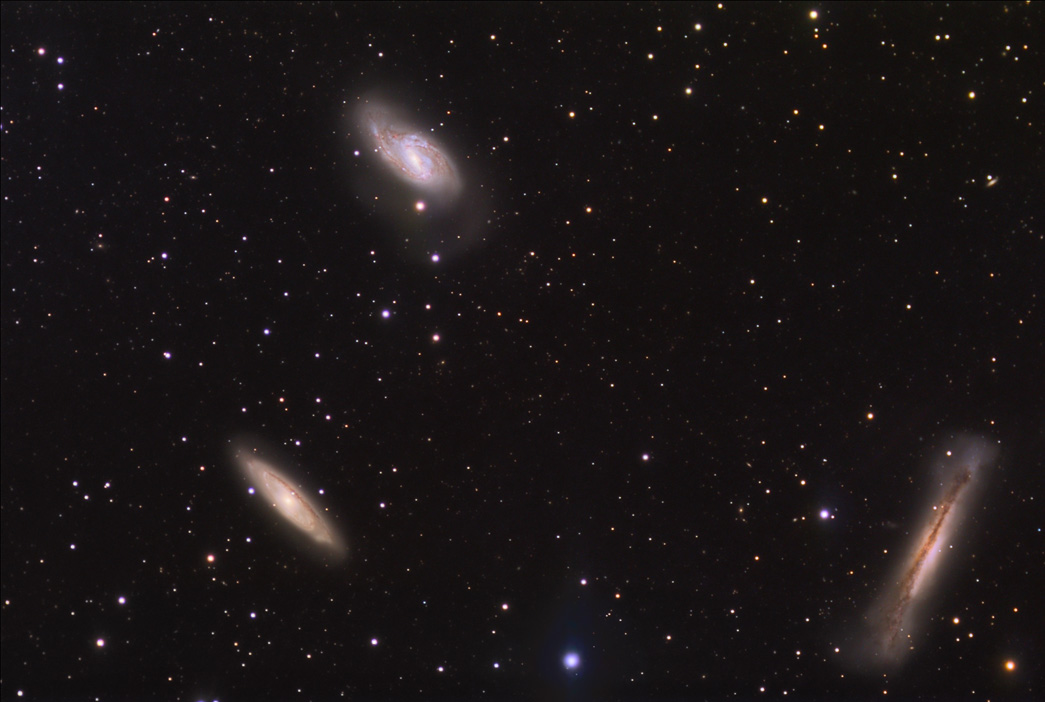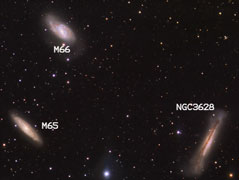

The Leo Trio:There are three large galaxies plainly visible in this image, called M65, M66 and NGC3628 (as shown on the picture to the right). All three are spiral galaxies; NGC3628 presents to us edge-on, so we cannot see the spiral structure in this picture. Being within the part of the sky covered by the constellation Leo, they are known by the euphonious name "Leo Trio." They are thought to be about 30-35 million light years away from us, and are physically part of the same galaxy group (not merely in the same line of sight). At that distance, M65 and M66 are about 60,000 light years in diameter, while NGC3628 is about 100,000 light years in diameter (by comparison, our Milky Way galaxy is about 100,000 light years in diameter). Because they are relatively close together, they each show some signs of the gravitational forces they subject on one another. I particularly enjoy picking out the many small, background galaxies in this picture. |
 |
Copyright 2007 Mark de Regt